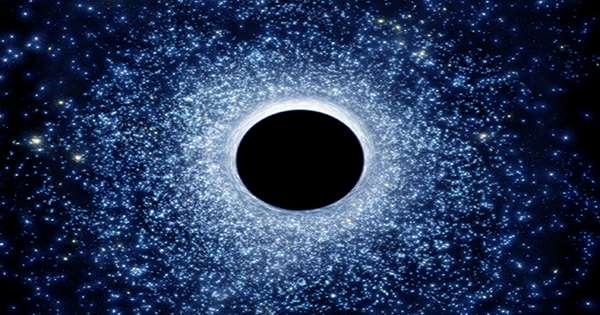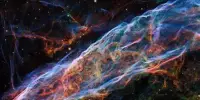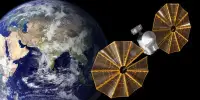According to a new study, black holes could be unusual anomalies in spacetime called topological stars that are caused by hidden cosmic dimensions.
Topological stars are entirely speculative at this stage, existing only as mathematical constructs. They do, however, have the potential to investigate difficult cosmic riddles like as the true nature of black holes and the mind-boggling notions advanced by string theory, a framework that aims to reconcile seemingly contradictory physical rules into a coherent theory.
String theory claims that particles in the cosmos are actually vibrating strings connected to many more dimensions that we cannot perceive. For years, scientists at Johns Hopkins University (JHU) have attempted to imagine the things and events that might exist in such a universe, such as topological stars, or bubbles of nothing that develop in the fabric of spacetime.
Currently, the team has demonstrated through simulations that topological solitons would exhibit “remarkably similar to black holes in apparent size and scattering properties, while being smooth and horizonless,” according to recent research published in Physical Review D. In other words, from our vantage point, the hypothetical objects would appear almost exactly like black holes, suggesting the intriguing possibility that they could exist in our universe.

Pierre Heidmann, a postdoctoral fellow at JHU and study leader, explained string theory to Motherboard in a conference call with co-authors and JHU physicists Ibrahima Bah and Emanuele Berti. “String theory is a theory that reconciles quantum physics and gravity into a quantum gravity theory,” he added. “Usually, when you have a new theory like that, you have new degrees of freedom that come with it, and you can try to see what new fundamental objects can arise from that.”
“It’s an interesting question to ask: Are there things other than a black hole” that “will give you a hint about what new physics could look like?” Bah was added. “However, before you get there, you need to know how to tell if you have a black hole or not, and you need some prototype examples of things that aren’t black holes to compare.”
Black holes are among the most fascinating and perplexing things in our universe. These huge compact entities have such strong gravitational pull that nothing, not even light, can escape beyond their event horizon. Scientists used the Event Horizon Telescope to observe black holes and collect gravitational waves, which are ripples in spacetime caused by these objects.
Though scientists can detect true black holes in space, there are numerous unanswered issues about the nature of these odd objects. For example, our present understanding of black holes places a point of infinite density, known as a singularity, at the hole’s center. According to Albert Einstein’s theory of general relativity, endlessly dense regions cannot exist, hence the concept of a singularity is merely a placeholder until we can figure out what is going on within black holes.
String theory may be useful in resolving this issue because it provides a new framework for uniting the cosmos at enormous cosmic scales, where general relativity rules, with the world of atoms, which is governed by quantum mechanics.
For years, Heidmann and Bah have been building mathematical models of topological stars to investigate this possibility. They developed visualizations of what these objects would look like in space in their latest collaboration with Berti, who specializes in gravitational physics, demonstrating that they look almost identically like black holes.
“The big breakthrough that [Heidmann and Bah] made a few years ago is that they finally managed to construct solitons that had no charge as seen from very far away, and that’s a key property of astrophysical black holes,” Berti said.
“Many people in the standard general relativity community started paying attention after that because these things may have observational implications if there’s some way that they can actually be realized in the physical universe.”
While solitons are strikingly similar to black holes, major distinctions may possibly be detected by a close observer. The things are like wrinkles in spacetime, with no compact stuff like black holes, thus light would be bent and scattered by them but might still escape.
As a result, topological stars would theoretically emanate light signatures and gravitational waves, serving as “smoking guns for future imaging experiments,” according to the paper. Perhaps one day, scientists will hunt for these signatures to determine if topological stars are hiding in the galaxy, camouflaged as black holes, but the JHU team says this is a long way off because it’s not even obvious if they exist.
“We have just basic solutions and we try to see their relevance, but we’re very far from any kind of prediction of their existence in the world,” Heidmann said.
“There will be a lot of exciting things for several of us to do, and it’s an interesting set of questions to explore,” Bah concluded, adding that it will “require a lot of hard work and a lot of creativity.” “But does it make sense to go down this rabbit hole?” “I believe that question has been answered.”
















